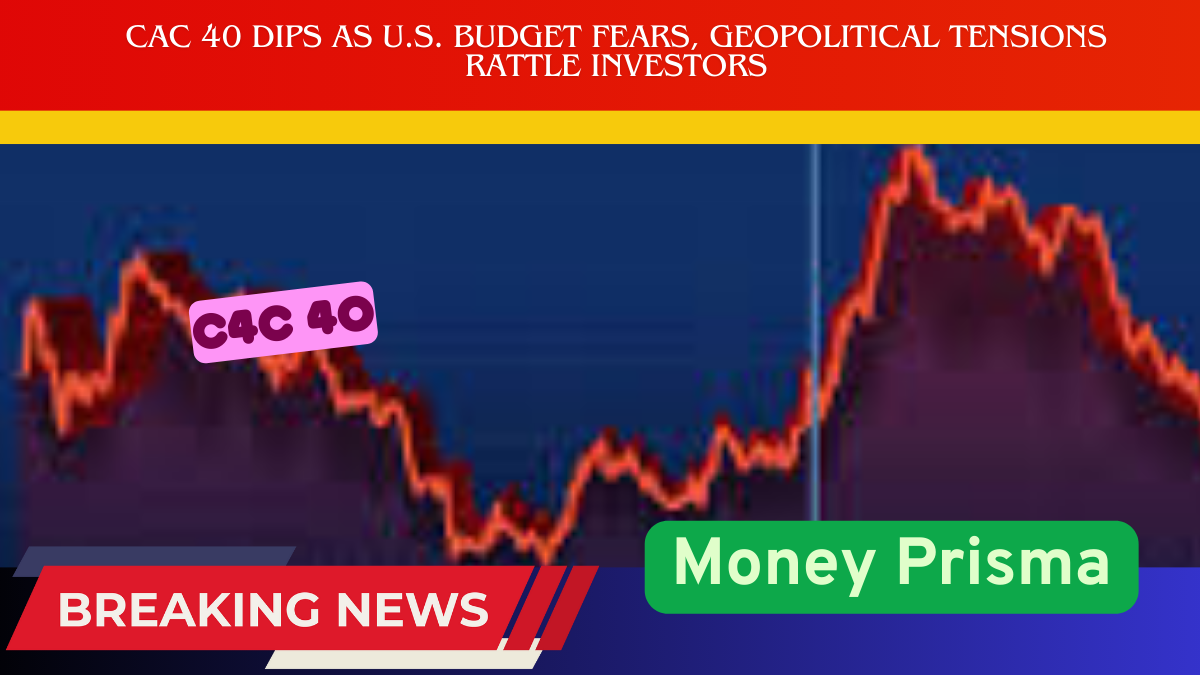The Paris stock market’s taking a hit today—and there’s more than one reason. Worries about the U.S. budget and rising global tensions are giving investors a headache. Add in oil prices climbing again, and you’ve got a market that’s clearly uneasy.
It’s not just Paris. The CAC 40—France’s main stock index—was down 0.87% by midday, sitting around 7,873.55 points. Not great. And honestly, Wall Street’s not helping either. Futures are pointing to a 0.8% drop over there too. On Tuesday, the S&P 500 ended its nice little six-day winning streak.
So yeah, the mood? Cautious. Nervous. A bit shaky.
Why It Matters: Big Picture Worries Everywhere
If you’ve been watching the market bounce back lately, you probably thought, “Hey, things are finally looking up.” I mean, the rebound in April and early May was strong. Fast and big.
But now? That glow’s starting to fade.
Kristian Kerr, head of macro strategy at LPL Financial, put it bluntly: “The rally was great, but let’s not pretend all the risks are gone. They’re not.” He’s got a point. Things may look stable for a moment, but underneath—uncertainty’s still running the show.
What’s Going On in Washington?
Here’s where it gets tricky. U.S. President Donald Trump is pushing a new budget plan. It’s big. Like really big. He’s calling for massive tax cuts—again—and trying to push through a reform package kinda like what he did during his first term.
But this time, it’s not going so smooth.
On Tuesday, Trump was on Capitol Hill, trying to rally Republicans. Not all of them are on board, though—especially those from Democrat-leaning states. They want more tax breaks for local and state taxes. Without that, they’re saying “no thanks.”
The deadline? Memorial Day weekend. That’s this coming Monday, May 26. He wants a deal done by then. But time’s ticking—and markets don’t love deadlines with this much uncertainty hanging over them.
Pro Tip: Watch Those Bond Yields
Investors are now eyeing the bond market. Closely.
Earlier this week, long-term U.S. Treasury yields spiked. The 10-year moved above 4.5%. The 30-year? Over 5%. And those numbers are still climbing. That tells us one thing—people are worried.
Because let’s be honest. If the U.S. cuts taxes again without cutting spending? The deficit balloons. We’re talking an extra $3 to $5 trillion added to the debt. The U.S. debt is already a crazy $37 trillion, and the annual deficit is hovering around 7% of GDP.
Swissquote’s Ipek Ozkardeskaya summed it up well: “If markets don’t play along, there’s nothing the government can really do. Look at the UK’s mini-budget mess under Liz Truss. If investors say no, it’s no.”
Oil’s Heating Up Too—And Not in a Good Way
Here’s another pressure point—oil prices.
CNN’s reporting that Israel might be gearing up for strikes on Iranian nuclear sites. That’s a big deal. And it’s pushing oil prices higher. Brent crude and U.S. WTI both climbed more than 1% on the day.
Why does this matter? Iran’s the third-biggest oil producer in OPEC. If they get pulled into a fight, their supply gets disrupted. Even worse, if Iran retaliates and shuts down the Strait of Hormuz—that’s bad news. That narrow waterway handles oil from Saudi Arabia, Kuwait, Iraq, and the UAE. Mess with that, and global oil flows take a hit. Prices spike. Again.
Quick Stat: $37 Trillion in U.S. Debt
Yep, you read that right. The U.S. national debt is closing in on $37 trillion. It’s one of those numbers that’s so big, it almost feels fake. But it’s real—and growing. Trump’s new tax plan could toss a few more trillion onto the pile.
Investors know that. And they’re nervous. Wouldn’t you be?
Across the Pond: Inflation Surprise in the UK
No big data drops from the eurozone or U.S. today—but the UK delivered a curveball. April inflation came in hot. Up 3.5% year-on-year. Analysts expected 3.3%. The month before? Just 2.7%.
Core inflation, which strips out food and energy, also jumped to 3.8%. That’s higher than the 3.6% forecast.
Why should you care? Because rising inflation usually leads to higher interest rates. And higher rates can spook both consumers and investors. It’s a ripple effect—and it’s already being felt.
JD Sports Takes a Hit
In London, JD Sports is getting hammered. The stock dropped nearly 7%, with intraday losses hitting 13% at one point.
The reason? Rough market conditions in the U.S. and fresh tariffs from Trump’s administration. The British retailer is feeling the squeeze. Competition’s fierce. Margins are getting thinner. Analysts say the company might not see much, if any, growth this year.
That’s tough. Especially in a year when every bit of profit counts.
Small Story: I Watched This Happen
Not long ago, I watched a similar scenario play out back in 2022. Markets were upbeat—recovering fast from the COVID shock. Then one headline about interest rates hit, and boom—everything shifted. This feels the same. Like we’re just one news cycle away from another tumble.
Sometimes, all it takes is one speech, one policy slip, one missile launch. You get the idea.
What To Watch Next
So what’s next?
- Trump’s Budget Deal: If a deal isn’t reached by Memorial Day, expect more volatility. Markets hate uncertainty.
- Oil Prices: Any escalation between Israel and Iran could send prices soaring. Watch the Strait of Hormuz. Seriously.
- Inflation Trends: Especially in the U.S. and UK. If numbers keep climbing, central banks might raise rates again. Not ideal.
- Bond Yields: Rising yields usually mean falling stock prices. And yields are rising.
In Summary: Buckle Up
Right now, markets are on edge. Between a shaky U.S. budget plan, rising debt, global tensions, and inflation surprises—it’s not exactly smooth sailing. The CAC 40’s drop is just one sign of the broader unease.
Investors are jittery. And unless Washington pulls off a budget deal fast, and Middle East tensions cool down, the bumpy ride’s not over.
So yeah—buckle up. It might be a long week.

